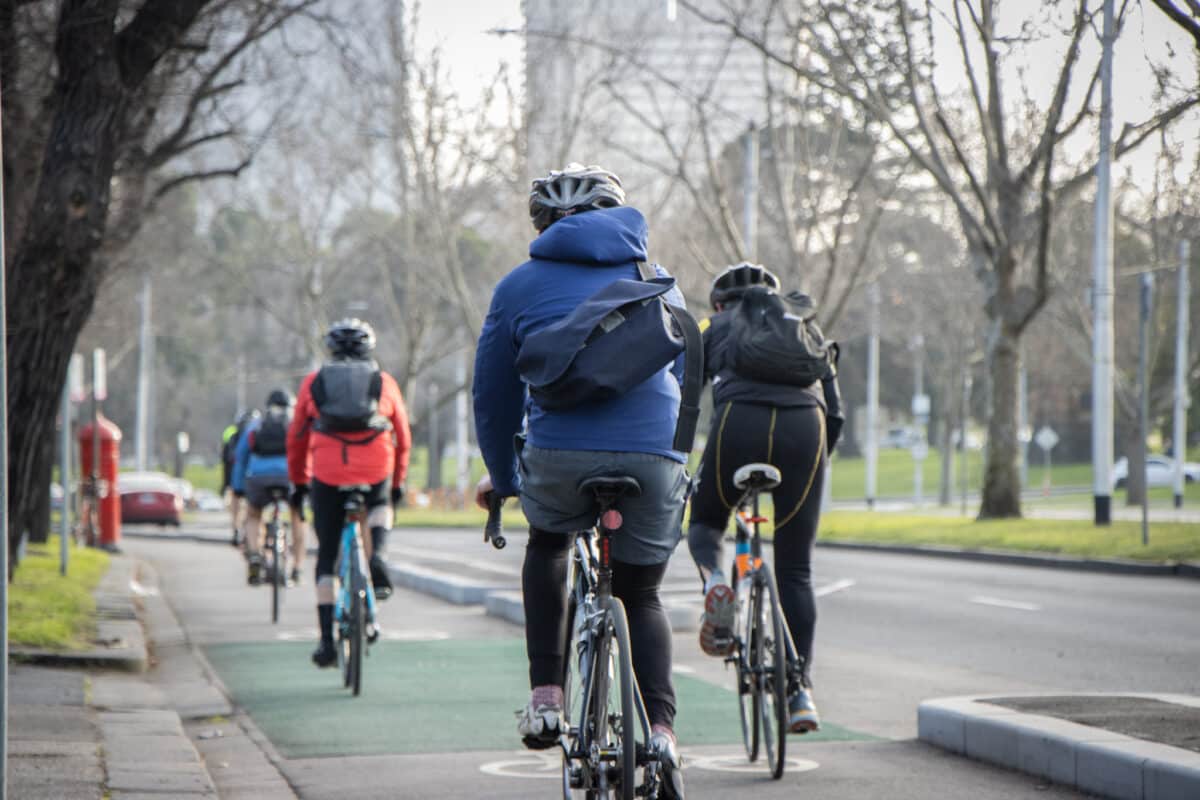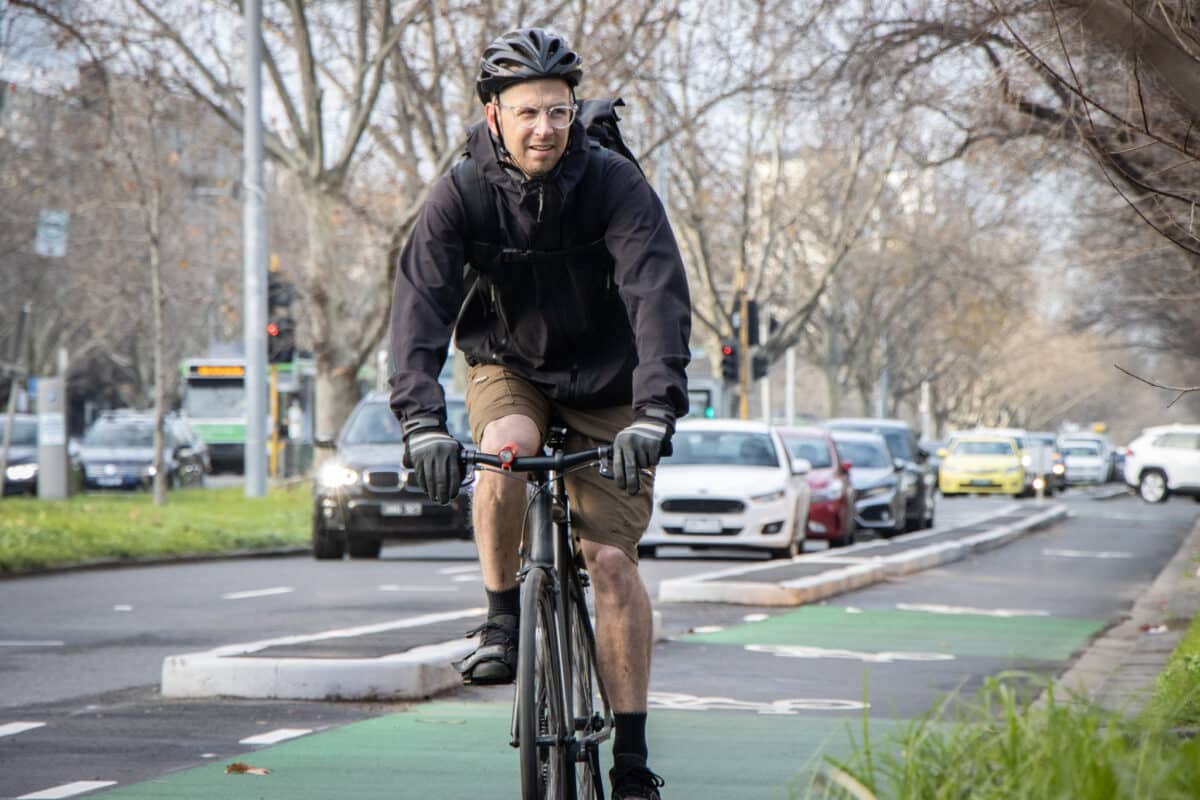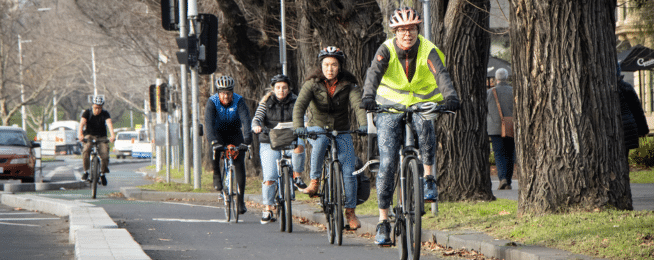Critical sections of the St Kilda Road separated bike lanes have been installed and riders can ride most of the boulevard in safety.
Major Road Projects Victoria (MRPV) and contractors ACE Constructions have wrapped up the first three phases of the project and new facilities run from Linlithgow Avenue to Dorcas Street, Toorak Road to Union Street and Union Street to Charnwood Road.
The central zone around the Anzac Station precinct will be delivered by Metro Tunnel contractors as that project moves towards completion in 2025
The final section south of Charnwood Road is yet to be scheduled.
The new lanes are a culmination of a remarkable transformation of St Kilda Road over two decades from no bike lanes, to narrow bike lanes, then wider lanes with green treatment and other finessing, and finally, separation from traffic.
Some gnarly road crossings and alignments in the St Kilda Junction precinct have also had their kinks straightened out and now present much lower risks for riders.
In earlier times, St Kilda Road had a bad record for dooring incidents, a problem that will be well in the past under the new configuration.
St Kilda Road is a major commuter route for people living south of the city due to the convenient crossing of the Yarra at Swanston Street, and the new design is expected to attract more riders daily.

Now that the project is completed, there will be an inevitable period of adjustment as road users—drivers, riders, tram travellers and pedestrians— all adjust to the new layout.
For some drivers the new layout of the street will be strange initially, and extra care and attention may be required.
St Kilda Road is unusual in that many of the cars along the street turn off to the left during their journey, both travelling towards or away from the Melbourne CBD.
Bike riders, however, mostly travel straight through, creating a potential for conflict.
Traffic signals (including bike lanterns), which may continue to be tweaked for some time, and green road markings (including hook turn boxes) have been designed to mitigate any such conflict.
Although bikes will have priority departure at intersections, this also means that riders will encounter risks if traffic signals are wilfully ignored.

The usual rules applicable to left turning vehicles will apply. Refresh your knowledge here.
For more information about sharing the road with all road users, please visit the following links:
A major public education campaign is being rolled out to guide road user response to the new layout.
There are a number of busy driveways and laneways along the route where drivers will enter and exit across the bike lane.
Sightlines have been carefully managed at these points, and relevant apartment residents and businesses have been alerted with poster in their buildings. None-the-less riders should keep an eye out.
A notable element of this project is that the separator curbing is not actually concrete: Rather recycled glass and calcium carbonate has been utilised to reduce the environmental footprint of the project
Minister for Transport Infrastructure Jacinta Allan said: “The separated bike lanes will make travel safer for the 3500 cyclists who use Melbourne’s iconic boulevard every day by physically separating vehicles and cyclists.”
Member for Albert Park Nina Taylor said: “This considerable investment in our inner-city cycling network will boost active transport and help to reduce traffic congestion.”


